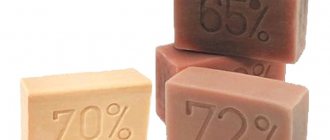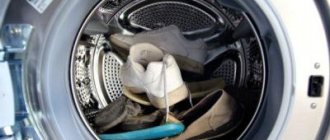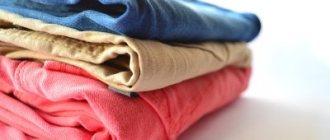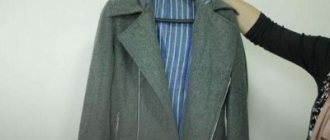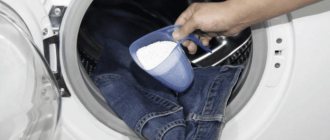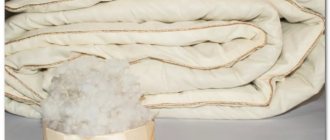Beko washing machines successfully combine innovative technologies, safety, convenience and an affordable price tag. The range of products is truly impressive; even the most sophisticated buyer will not have any difficulty choosing household appliances to suit their needs. The washing modes in the Beko washing machine are easy to switch; the symbols do not cause the slightest difficulty. Of course, before you start using it, you should look at the instructions and review the main washing programs.
Basic modes
Pictures take up less space, they are more impressive and are more suitable for the modern design of automatic washing machines (WMA). But their understanding is often difficult: not everyone will guess the first time what this or that picture means—instructions are used to decipher it. And most importantly, hand-drawn symbols are not standardized - each manufacturer is free to create them at his own discretion.
The Beko washing machine may not look so impressive because of the inscriptions, but they make operation as comfortable as possible. But the inscription is not a carrier of all the information - the names of the modes do not indicate either temperature or speed. Before you turn on programs, you should read their descriptions to know what they are suitable for.
| Program names | Description | Approximate process time, min |
| Cotton | Wash cotton linen in hot water. Range - 60–90 °C. You can even boil cotton fabrics without harming them. An option for heavily soiled cotton and other durable materials. Cotton fabric absorbs water strongly, so the laundry is wrung out at high drum rotation speeds | 120–150 |
| Ecocotton | For cotton items, subject to minimal energy costs | 180 |
| Dark fabrics | Good for synthetics and cotton items. Moderate temperature prevents shedding | 100 |
| Synthetics | For synthetic and combined materials. Moderate water heating prevents shedding and deformation | 105–120 |
| Shirts | These delicate items can be washed at 40°C. The program prevents bruising | 120 |
| Mix 40 | A universal mode in which you don’t have to separate the laundry - load it into the machine, regardless of the type of fabric. You can load synthetics and cotton items together into the drum. | User selection |
| Express | Quick wash mode. Speeds up programs for cotton and synthetics. Use for lightly soiled items. Condition - 50% drum load | 90–115 (depending on fabric) |
| Pooh | For blankets and down jackets, but can also be used for ordinary products | 60 |
| Sport | Wash clothes for sports. Removes stubborn stains | 100–140 (depending on fabric) |
| Mini | For small batches of not very dirty products | 30–90 (depending on temperature) |
| Handwash | For gentle care. Delicate fabrics that cannot be washed in a regular machine are washed. Eliminates deformation and wear | 40–55 |
| Wool | For woolen items. To prevent the wool from matting, use slow rotation of the drum | 60–70 |
| Kids' things | Washing with thorough rinsing - thanks to the large volume of water | 160 |
| Self-cleaning | Self-cleansing. The cycle starts with an empty drum | 120 |
| Jeans | For denim items. Prevents shedding | 100–105 |
| Refreshing wash | For easy freshening of slightly soiled clothes. Eliminates unpleasant odors | 17 |
| Economy mode | Cool water - 20 °C. Only for items that are not heavily soiled. It is recommended to use liquid detergent instead of powder. | 100 |
The duration of the programs given in the table is approximate, it is different for each model. You can find out the exact time in the instructions for a specific model.
What other useful features does the Beko SMA have?
Manufacturers are constantly improving washing machines, giving them new functions. Thanks to new developments, Beko machines have acquired the following capabilities:
| Name | Description |
| Overflow protection | Water level monitoring system. If the level is exceeded, the device turns on the drain |
| Restart | If the power goes out, you can resume the interrupted program at the point at which the power outage occurred |
| Blocking | Locking the control panel from accidental pressing. Prevents children's pranks |
| Anti-wool | Thoroughly remove hair from items |
| Aquafusion | Saving washing powder - it remains in the drum until the cycle is completed |
| Aquawave | Drum tracking system - prevents imbalance. Linen does not wrinkle |
Washing modes and times in the Beko washing machine
The manufacturers of the Beko washing machine made sure that the user does not have to think for a long time about which program to choose. Therefore, we equipped the control panel not with icons, but with names of modes and functions. You can only find standard symbols for washing modes on SM Veko, like other brands.
Now you don't have to guess what the symbols mean, each program is signed. However, this does not provide information about how long it lasts or what its characteristics are.
Checking the temperature sensor
If after checking it turns out that the heater is working, proceed to check the thermistor. This sensor is located under the top panel. Take it out and check it:
- Remove the screws to remove the top panel.
- Remove the powder container and dismantle the control panel - these elements prevent you from getting to the temperature sensor. When the sensor is accessible, disconnect the wires from it.
- Measure the resistance using a tester. Under normal conditions - 4.7 kOhm.
- Warm up the sensor - lower it into warm water, the resistance should decrease. If the resistance remains unchanged, the sensor is broken and will have to be replaced.
- The thermistor is mounted in the same way as it is dismantled - the steps are performed in reverse order.
Descriptions and designations of Beko washing modes
By reading the operating instructions, you can find out in detail what a particular program means. But this is not always possible if the equipment was not purchased new or the instructions are lost. Therefore, in the table below we will look at the main modes and functions of the Beko machine.
Program table: main
| Name | Meaning | Approximate washing time* |
| Cotton | Cotton laundry is washed at high temperatures - from 60 to 90 degrees. Since cotton is not afraid of boiling, the mode can be used for heavily soiled items. Natural fabrics are durable and absorb a lot of water, so spinning is carried out at maximum speed. | 120-150 minutes. |
| Cotton Eco | The program washes cotton with minimal electricity consumption. | 180 minutes. |
| Synthetics | Choose a mode for synthetic and mixed fabrics. Thanks to the optimal water temperature, the laundry does not stretch and does not fade. | 104-118 minutes. |
| Dark fabrics | The program is designed for cotton and synthetic underwear. Dark and colored items may fade or become discolored, which is prevented by the program. | 102 minutes. |
| Washing shirts | Gently washes shirts at a temperature of 40 degrees, avoiding severe creasing. | 120 minutes. |
| Mix 40 | Convenient mode because you don't have to separate your laundry by fabric type. You can wash cotton and synthetics together. | — |
| Mini | Used for cleaning lightly soiled laundry in small quantities. | 30-90 minutes (depending on temperature). |
| Handwash | Gentle care for delicate, thin fabrics that require hand washing. Now you can care for them in the washing machine. At the same time, they do not wear out or become deformed. | 40-55 minutes. |
| Baby things (Baby protect) | Guaranteed removal of powder and other detergents from baby's clothes by using large amounts of water. | about 160 minutes. |
| Woolen items | A special program allows you to wash woolen items. Gently shaking the drum and a small amount of water prevents the formation of pellets. | 60-70 minutes. |
| Pooh | In this mode you can wash both regular items and blankets and pillows. Allows you to get rid of allergens such as dust mites. | — |
| Quick wash | Reduces the time of the “Cotton” and “Synthetics” programs. Used for lightly soiled laundry, while only half of the total volume is allowed to be loaded. | 90-115 minutes (depending on the type of fabric). |
| Sportswear | You can wash things with difficult stains. Suitable for synthetic and cotton fabrics. | 100-140 minutes (depending on fabric). |
| Saving | Wash at low temperatures – 20 degrees – for lightly soiled items. It is recommended to use liquid detergents, since regular powder may not have time to dissolve. | less than 100 minutes. |
| Refresh cycle | Refresh new, lightly soiled items or those that have been sitting in the closet. Allows you to get rid of unpleasant odors. | 17 minutes. |
| Jeans | Caring for denim clothing. The optimal temperature prevents molting. | 100-105 minutes. |
| Self-cleaning | The machine cleans itself from the inside, running a cycle without laundry. | 120 minutes. |
*The table gives approximate figures; they depend on the model of the machine. Look at the instructions - the description of the programs should indicate their duration. If not, then focus on the ranges given above.
Additional Beko modes
| Name | Meaning |
| Soak | Soaking allows you to deal with difficult stains and dirt before the main wash. |
| Rinsing | To thoroughly remove powder from clothes, include an additional rinse. |
| Easy ironing | Minimum spin and incomplete drum loading; protects clothes from creasing. |
Useful features of the Beko washing machine
As technology develops, new features are added. Useful developments from Beko are listed below in the table.
| Name | Meaning |
| Animal Hair Removal | Thanks to the large amount of water, the function allows you to clean things as much as possible from animal hair. |
| Panel lock | After starting the program, the keys on the control panel are locked, which avoids accidental pressing. The function is useful for those who have children in the house. |
| Aquafusion | Save detergent consumption with this mode. It remains in the drum until the end of the cycle, and this means savings and high quality washing. |
| Aquawave | The system monitors the rotation of the drum, preventing imbalance, which allows you to clean laundry carefully, without wrinkling. |
| Restart | A useful function that allows you to resume the program at the interrupted stage after a power outage. |
| Overfill protection | A special sensor monitors the amount of water in the tank. If it exceeds the permissible level, the drain is automatically turned on. |
Eco cotton. What is this?
Based on the content of harmful components in their composition, textile products are divided into four groups:
- I – fabrics for making items for newborns and infants up to 36 months of age.
- II – material used for long-term contact with the skin.
- III – textiles that should have minimal contact with the skin or no points of contact with it at all.
- IV – fabrics for finishing. Used to create decorations on items of clothing.
Important! Eco cotton belongs to the first group of textiles. It is a material that does not have harmful substances in its composition.
For the production of threads, not ordinary, but bio-cotton is used. It differs from the usual version of raw materials in the methods of processing the plant:
- When planting, seeds are used that do not have any genetic changes.
- An ecologically clean area is chosen for sowing.
- When growing cotton, chemical fertilizers and pesticides, heavy metals and insecticides, as well as herbicides that help destroy excess vegetation are not used.
- Enrichment of the soil with useful minerals occurs only through alternating planting and the use of organic fertilizers.
- Loosening the soil and weeding is carried out only by hand.
- Ripe seeds are collected by hand.
- The bleaches used in the production of yarn and fabric do not contain chlorine.
- Finished clothing is processed only with natural dyes with low sulfur and metal content.
Important! Children's clothing for newborns made from this fabric has a natural brown or green color.
- Coloring occurs only in light colors. The design is applied only to the front side by printing.
All this makes organic cotton more durable and resistant to external factors, including ironing, washing and frequent wear.
Important! Eco cotton consistently withstands more than 100 washing cycles, and only after that it becomes sensitive to external influences on it, while ordinary cotton grown using chemicals begins to deteriorate after the 5th wash.
Running programs
The symbols on the control panel look more stylish, the icons take up less space, but users are often confused and cannot decide which mode the symbol corresponds to. To decrypt, you constantly need instructions for the machine. Moreover, the drawings are not standardized, and each manufacturer creates them at their own discretion. This is why it is so difficult to switch from a machine of one brand to a model of another brand.
As for Beko washing machines, their control panel is full of inscriptions. Perhaps because of this, the machine does not look so stylish and impressive, but the user does not get confused in the programs. However, you will have to find out the description of the modes, namely such parameters as: washing time, water heating temperature, spin speed. Before starting the “cycle”, you should understand the purpose of special programs.
It is important to select a washing mode based on the type of fabric and the intensity of contamination.
Let's present a description of the special. programs found on Beko machines.
The duration of the cycles is approximate, in fact the time may “shift” on different Beko models. The exact washing duration, as well as the water heating temperature and spin speed when choosing a specific program, should be found in the instructions for the washing machine.
Drain pump – from RUB 1,700*
The pump is responsible for draining water from the tank. It is a housing equipped with an impeller and a motor that drives it. As a rule, pump failure is associated with debris and foreign objects getting into it. They block the rotation of the impeller, which causes either the blades to break or the motor to burn out.
SIGNS
The Beko SMA does not drain water or drains it very slowly. If the pump motor malfunctions, the sounds of its operation cannot be heard. If the motor is running, but the water drains very slowly, the reason is that the impeller blades are blocked or broken. Error H5 may appear on the SMA Beko display.
HOW TO FIX
The technician takes out the pump and inspects it. When dirty, it cleans. If the blades break or the motor burns out, the part is completely replaced.
*Prices are only for the work of the master, the new pump is paid separately.
Features and duration of various modes
Experienced housewives know that they need to wash things in different ways. The washing method depends on the composition of the fabrics, the color of the products, and the degree of contamination. Choosing the wrong method can not clean, but hopelessly ruin the item, fixing stains and dirt, giving it a yellowish and worn-out appearance. All these requirements are programmed in the machine’s operating settings.
You need to implement your knowledge and recommendations from the manufacturer of the items by choosing the correct washing scheme on the device display.
You should not set too much temperature, time, or washing intensity, exhausting things with aggressive speeds or excess detergents. This will not make them cleaner, but will wear out faster. Let's look at what functions and modes the machines have, and how to properly wash different things.
Fast
This machine mode is selected to refresh lightly soiled items - the cycle is only 15-30 minutes. The water is heated to 30-40 °, the laundry is wrung out at maximum speed. Convenient to use for sportswear. Time savings are up to 40%, but the quality of washing is significantly lower. Re-washing may be required, resulting in increased time and cost.
Cotton 95 degrees
This function simulates boiling of cotton fabrics. Heating water this way takes time - the machine runs for 2 hours.
Cotton 60 degrees
In this mode, the machine can wash cotton and linen. The washing time is just under 2 hours. This is an ideal option for washing bed linen and soiled white cotton items.
Cotton 40 degrees
The machine washes automatically in this mode for an hour and a half. It is convenient to use this function for washing items made from natural fabrics that are not very dirty.
Help: in most cases, 40° is enough to completely remove all dirt. High temperatures are not required for modern detergents and fabrics.
Synthetics
This setting is used for washing items with any amount of synthetic impurities in the composition. Most products are made from mixed fabrics. This wash lasts, depending on the temperature, from one and a half to 1 hour 50 minutes.
Delicate
Gentle washing is used for delicate fabrics and complex outfits with decorative elements. With gentle mode, things wrinkle less and jewelry stays in place. Duration – no more than an hour, temperature – 30 °.
Silk fabrics are washed for 50-60 minutes, the drum rotates weakly, spinning at low speeds.
Wool
Woolen items should be washed only in this mode - the drum rotates slowly (36-80 revolutions) and swings slightly. A minimal amount of water is poured in just to wet the loaded woolen fabrics. Temperature – no higher than 40 °. The drum is loaded to 2/3 of the volume. Rinsing in this mode is long, with repeated addition of water, the laundry is wrung out weakly. Washing duration is an hour.
Manual
Hand washing can be used for items that are not recommended to be machine washed. The drum's movements are weak; it sways rather than rotates. Low temperature (30°), high water level is used. Spin is weak or absent. Duration - about an hour.
What does a full cycle consist of?
The sequential execution of the usual stages - washing, rinsing and wringing out things - constitutes a full cycle of operation of the machine. The device allows you to regulate the specifics of these operations.
Wash
The choice of washing mode is determined by the following parameters:
- fabric structure;
- the presence of decorative elements on products;
- contamination (you can include soaking, boiling cotton fabrics).
The right choice will determine not only how well things are washed, but also possible damage to the laundry from the aggressive effects of temperature and high speeds.
Rinsing
When rinsing, detergents are washed out of fabrics. Many people prefer to run an additional rinse mode to thoroughly wash the laundry from powder.
Spin
Choosing the right spin is the key to easy and enjoyable ironing. Only cotton fabrics should be spun at high speeds. Linen, silk, and synthetics should not be wrung out too much so as not to damage the fabric and make ironing easier.
Support programs
Each Beko washing machine has additional options that are connected to the main process. These are “Pre-wash” or “Soak”, “Additional rinse”, “Drying”, etc. Auxiliary programs are necessary to achieve maximum effect when cleaning laundry.
The meaning of prewash is that the laundry first lies in a solution of water and powder. The washing machine drum sometimes spins a couple of revolutions, and then “freezes” in place again. Thanks to soaking, it is possible to soften difficult stains and ensure their complete removal during the main wash. The auxiliary mode lasts from 15 to 40 minutes, it all depends on the Beko machine model.
Key Features
In order to make an objective comparison, you can consider the key characteristics:
The Italian company Indesit prefers to use classic style design. All models are similar to each other and differ in small external details. Almost always, washing machines from this company are painted white. The color range of household appliances from the Turkish manufacturer BEKO additionally includes gray and white.
In models from this manufacturer, the door attracts attention with its aesthetic and original appearance. The materials used in both cases are cheap plastic. This leads to the fact that it is inconvenient to press the buttons; if you press on the body, it starts to play
The color may begin to yellow or gray over time. This is less noticeable in cases where the buyer has chosen dark plastic. If we consider the build quality, then Indesit is in first place. In this case, the defect rate is low, and breakdowns rarely occur. However, both firms have the most typical problems in this area. On cars manufactured by Indesit, the handles that open the door often break. In BEKO products, motors break, drive belts break, and pressure switches malfunction. According to service centers, this company has a defect rate of 30%.
BEKO washing machines: prices
BEKO washing machines mostly belong to the budget class. Their prices start from only ten and a half thousand rubles. For this amount, for example, you can purchase a super-narrow WKB 41001 machine with a drum capacity of 4 kg, a spin speed of 1000 revolutions, fifteen main and four additional washing programs and such useful functions as automatic control of imbalance and water level.
A machine with a digital display, the innovative AquaFusion program and the function of cleaning animal hair will cost the buyer about 15 thousand rubles. An example is the WKY60831PTYW2 model.
One of the most expensive models of the brand, costing about 35 thousand, BEKO WMY-81243-PTLMB1 is characterized by reduced (-20%) energy consumption, a wide range of basic programs and additional features, high-speed spin (1200 rpm), and a comprehensive control and protection system.
conclusions
Inexpensive washing machines are an excellent option for those who value, above all, the comfortable use of the device and good washing quality. Budget models are easy to use, have good energy efficiency and the most necessary work programs, without unnecessary frills and expensive content, everything is just something that you can definitely use every day.
Good spin
As I have repeatedly noted, inexpensive devices cannot boast of high-quality spin, usually its level is B-C class. In this case, two washing machines have a Class C spin – BEKO WKB61001U and Candy GC41051D. This is a very small figure, but better than the ATLANT 50Y88 with its D class and 800 rpm.
And again, ATLANT 50Y88 comes first here - only this unit is protected from power surges. Agree that this is a very necessary property of the machine, since electrical appliances often fly due to changing voltage in the network.
How to set the program?
The user manual describes the algorithm for starting the desired washing mode. You can select a program with automatically set parameters (temperature, cycle duration, spin speed) or adjust the conditions at your discretion.
It is possible to take the basic mode as a basis and add the necessary options, change the water heating temperature, and the spin speed.
The washing program is selected using the selector knob. The temperature is set by turning the second switch, spin by pressing the key. Then the “Start” button is pressed. The duration of a cycle consists of the time of all processes included in it.
Interesting:
Source
Convenience and improving reliability are the secret to the success of Veko washing machines
The use of the Veko technique is very comfortable, thanks to several significant improvements:
Veko washing machines are thought out with precision down to the smallest detail!
Veko washing machines: deciphering error codes
Not every Veko washing machine has an error display; some have one or another indicator on:
The error codes described above will help you independently identify breakdowns and eliminate their causes.
Self-diagnostic system database
Self-diagnosis helps to operate the VEKO washing machine competently and safely. The system regularly scans the device for possible problems and reports a malfunction via a digital display. The owner can only decipher the error code and fix the problem. The database is represented by a number of combinations.
- H1 – The temperature sensor is damaged. Repair involves testing the thermistor with a multimeter and measuring resistance.
- H2 – Fixing problems with the electric heater. Most likely, scale or voltage surges interfere with the operation of the heating element.
- H3 – Problems with the thermistor or failure in the control system. Accompanied by exceeding the set temperature and blinking of the first two lights.
- H4 – Problems with water pressure. The fill valve triac is probably faulty or the wiring is damaged.
- H5 – Draining is difficult. If there is a blockage, we clean the pump; if there are defects, we replace the pump.
- H6 – Short circuit of one of the triacs. There are several possible breakdowns: switch burnout due to current leakage, damage to the wiring of the unit, problems with the board or electric motor.
- H7 – Error in water intake. The reasons may be a faulty pressure switch, a broken UBL, a closed water tap, or a burnt-out control module.
- H11 – Stopped engine operation. A non-functioning tachogenerator, worn bearings, brushes, loose wiring or a burnt-out triac lead to a stop.
The signal sent by the system will allow you to narrow down the search for the trouble that has occurred. The main thing is to correctly decipher the code displayed on the display and fix the problem as soon as possible.


